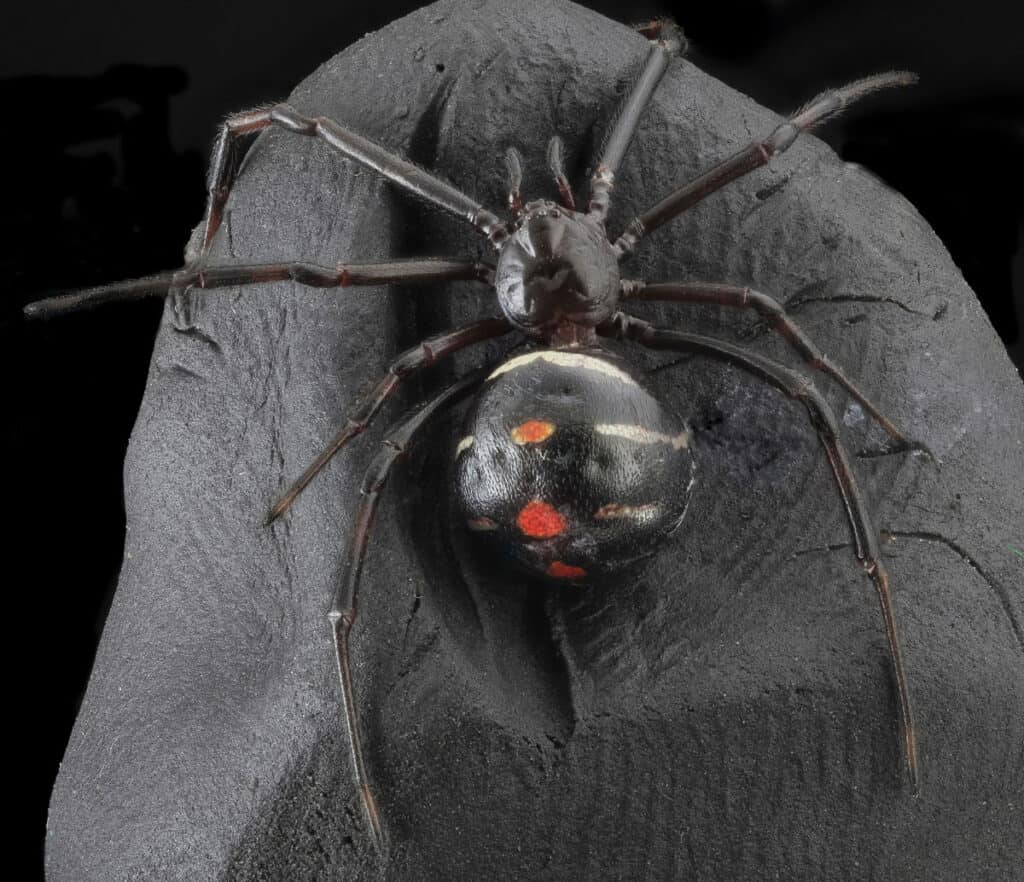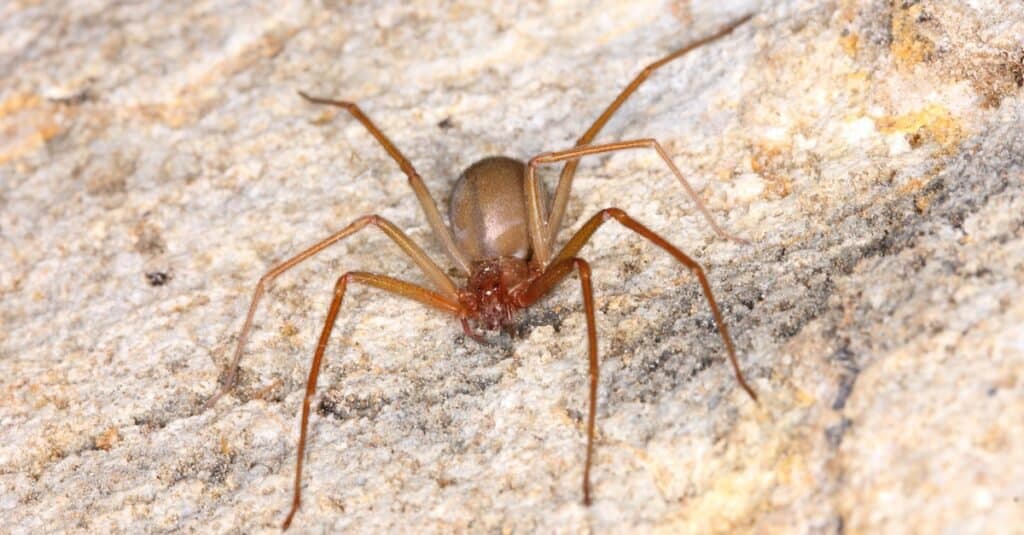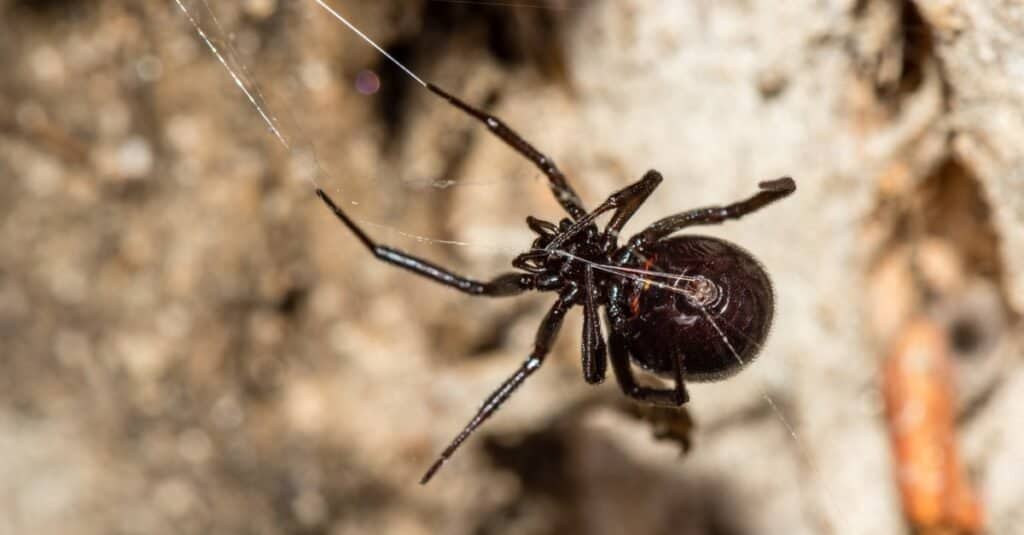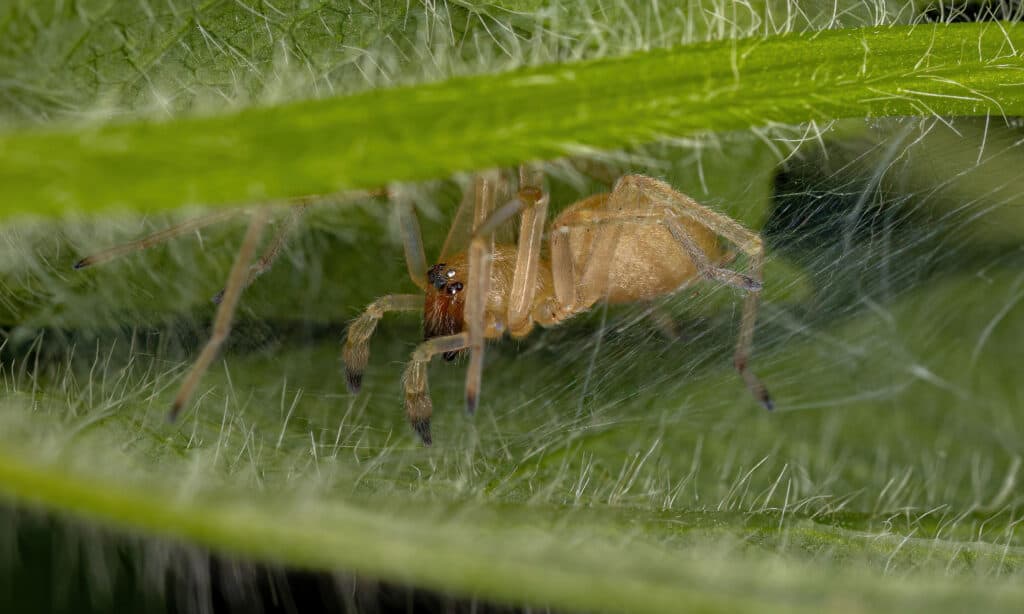There are about 40 known species of spiders in Tennessee, and more are still unidentified yet. Almost everyone has seen these eight-legged arachnids at least once in their homes. Whether you’re a resident of Tennessee or you’re just visiting, you may wonder: “are spiders in Tennessee dangerous”? While most spiders in Tennessee are harmless and are not known to bite, a few are dangerous to humans! They are typically wary of human contact, but they attack when they feel threatened and cause injuries with their venom.
On the bright side, there are only five species of venomous spiders in Tennessee. They include the black widow spider (northern and southern species), brown recluse spider, false black widow spider, brown spider, and black-footed yellow sac spider.
These dangerous spiders are highly venomous and are known to cause a range of mild or moderate to severe symptoms that require immediate medical attention. Of these Tennessee’s venomous spider residents, the deadliest spiders you’ll likely encounter are the black widow spider and brown recluse spider, because they come indoors in search of food and shelter and their bites are the most potentially fatal to humans.
It’s important to be able to identify these dangerous spiders so you can avoid contact with them. So, read on to learn more about them and how you can easily spot them in or around your Tennessee home.
6 Most Dangerous Spiders in Tennessee
1. Southern Black Widow Spider

The venom of a southern black widow spider is 15 times more potent than a rattlesnake’s.
©Jeff W. Jarrett/Shutterstock.com
The southern black widow is one of the most venomous spiders frequently encountered in Tennessee. Commonly found in undisturbed woods, stumps, and stone walls, its diet primarily consists of various insects. This spider spins a strongly-built three-dimensional web where it lives and entangles prey. Female southern black widows are well known for their distinctive shiny black coloring with a red hourglass marking on the underside of their rounded abdomen. But juveniles and males have a different appearance, they are purplish to grayish-black with white stripes and yellow/orange spots.
The black widow spider is highly venomous, with the females being more dangerous than the males due to their large and needle-like mouthparts. The venom of a southern black widow spider is said to be 15 times more potent than that of a rattlesnake! The females are also well known for eating their mates after reproduction.
2. Northern Black Widow Spider

A northern black widow spider has a broken hourglass mark, unlike a southern black widow.
©Porco_Rosso/Shutterstock.com
Another species of black widow, the northern black widow spider, Latrodectus variolus grows, up to approximately 4-11 mm (0.16 – 0.4 in) in size. The males are almost half the size of the females. Unlike its southern cousin, the northern black widow has a broken hourglass mark with a disconnected thinner middle section often showing noticeable red dots. Remember that the southern black widow, on the other hand, has a complete hourglass marking.
An individual spider contains a large amount of highly toxic venom, released in small amounts. A bite from this spider may cause pain, muscle rigidity, vomiting, and sweating —a condition called “latrodectism.” Medical attention is required in cases of severe discomfort or spreading local redness accompanied by severe pain at the site of injury. While their venom is toxic, these spiders are shy and they rarely bite. A few fatalities have been recorded in the United States, occurring mostly in children.
3. Brown Recluse Spider

Brown recluse spiders are the deadliest spiders in North America.
©Pong Wira/Shutterstock.com
The brown recluse spider is the next most dangerous spider in Tennessee, after the black widows. They prefer to hide in dark and secluded places. Due to their reclusive nature, these spiders often build their web in cardboard, woodpiles, sheds, closets, garages, cellars, and other places that are generally undisturbed. Brown recluse spiders are easy to spot– they range in color from white to dark brown or darkish grey, with pale brown violin-shaped markings on the dorsal side of their cephalothorax. While most spiders have eight eyes, the brown recluse spider is easily identified with its three pairs of eyes (six eyes).
The brown recluse spider is one of the deadliest species in North America and in the United States. Bites contain necrotic and hemotoxic venom and are potentially fatal. The brown recluse spider is rarely aggressive, and they only attack when their isolated spaces are disturbed and the spider feels threatened. However, the symptoms of their bite often vary, but typically include a characteristic painful, itchy sore that becomes necrotized and may take months to heal. Most fatalities are seen in children and the elderly.
4. False Black Widow Spider

The false black widow spider has poor eyesight.
©Danie Spreeth Photography/Shutterstock.com
Often confused for the black widow spider, the false black widow spider (also called “cupboard spider”) does not have a bright red hourglass pattern or any other bright distinctive markings. Their typical color pattern ranges from purplish-brown to black with pale markings on the body. However, the females have round, bulbous abdomens (similar to black widows), and are typically larger than the males. They have poor eyesight, so they construct cobwebs to catch prey and to receive vibrations that warn them against invading threats from predators. You’ll likely spot these spiders in cosmopolitan areas around or close to human habitats.
False black widow spiders carry toxic venom and their bite is known to be of medical significance in humans. When they bite, victims often show symptoms like blistering, muscle spasms, pain, fever, sweating, or malaise. The symptoms are usually minor, without any long-lasting effects. They are not an aggressive species and most human bites only occur if they try to defend themselves when squeezed or pinched.
5. Black-Footed Yellow Sac Spider

The black-footed yellow sac spider gets its name from its appearance.
©iStock.com/ViniSouza128
This is a small venomous spider that gets its name from its appearance. The black-footed yellow sac spider has a pale yellow-beige body with dark brown markings on the palps, jaws, and the ends of its feet. It also has an orange-brown stripe running down its abdomen. Found on the foliage of trees and shrubs in Tennessee, they are nocturnal and only come out at night to look for food and mates.
Black-footed yellow sac spiders are venomous and capable of biting humans. A bite causes moderate pain followed by itching and swelling, which resolves within a few days. Luckily, they are not of major concern because they rarely bite and if they do, the severity of the venom is low and does not cause serious reactions in most cases. Regardless, this is not a spider to play with.
6. Brown Widow Spider

The ventral side of the Brown Widow spider, showing the hourglass pattern on the abdomen
©Decha Thapanya/Shutterstock.com
Though the brown widow spider is not one of Tennessee’s recognized spiders, its distribution is increasing in Tennessee — spotted frequently enough to make it to our list. Also a close relative of the black widows, the brown widow spider has black and white patterns on the sides of its abdomen as well as an orange-yellow colored hourglass shape. It prefers to live underneath eaves, toys, or equipment. You can easily locate them by finding their egg sacs, which have pointed spikes all over.
Even though the brown widow’s venom is considered to be twice as potent as that of black widow spiders, this species is the least dangerous spider on our list. This is because the brown widow spider only delivers a little amount of venom in a bite, so the effects of the toxin are usually very minimal in humans. However, they’re also dangerous because of their neurotoxic venom, which sometimes acts on nerve endings to cause similar unpleasant symptoms of latrodectism as seen in black widow bites. As much as they pose less of a threat, you want to make sure that you avoid contact with them.
The photo featured at the top of this post is © Vinicius R. Souza/Shutterstock.com
Thank you for reading! Have some feedback for us? Contact the AZ Animals editorial team.






